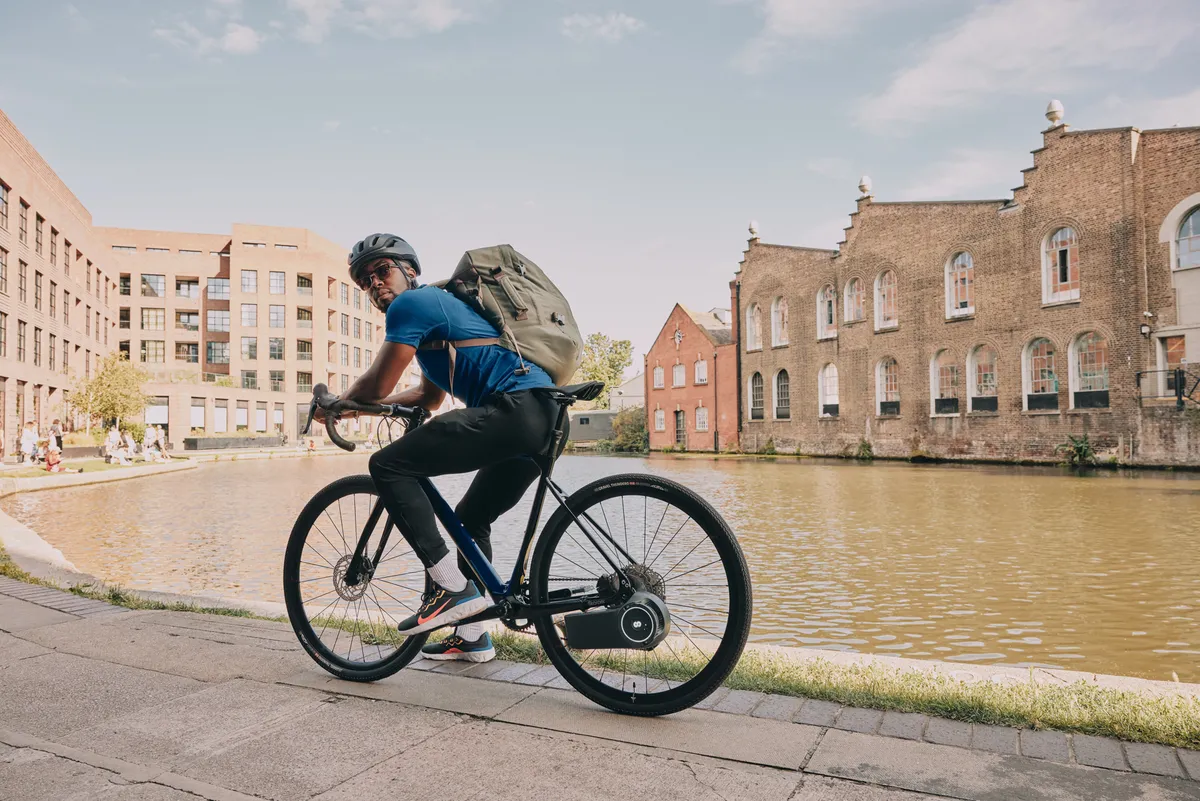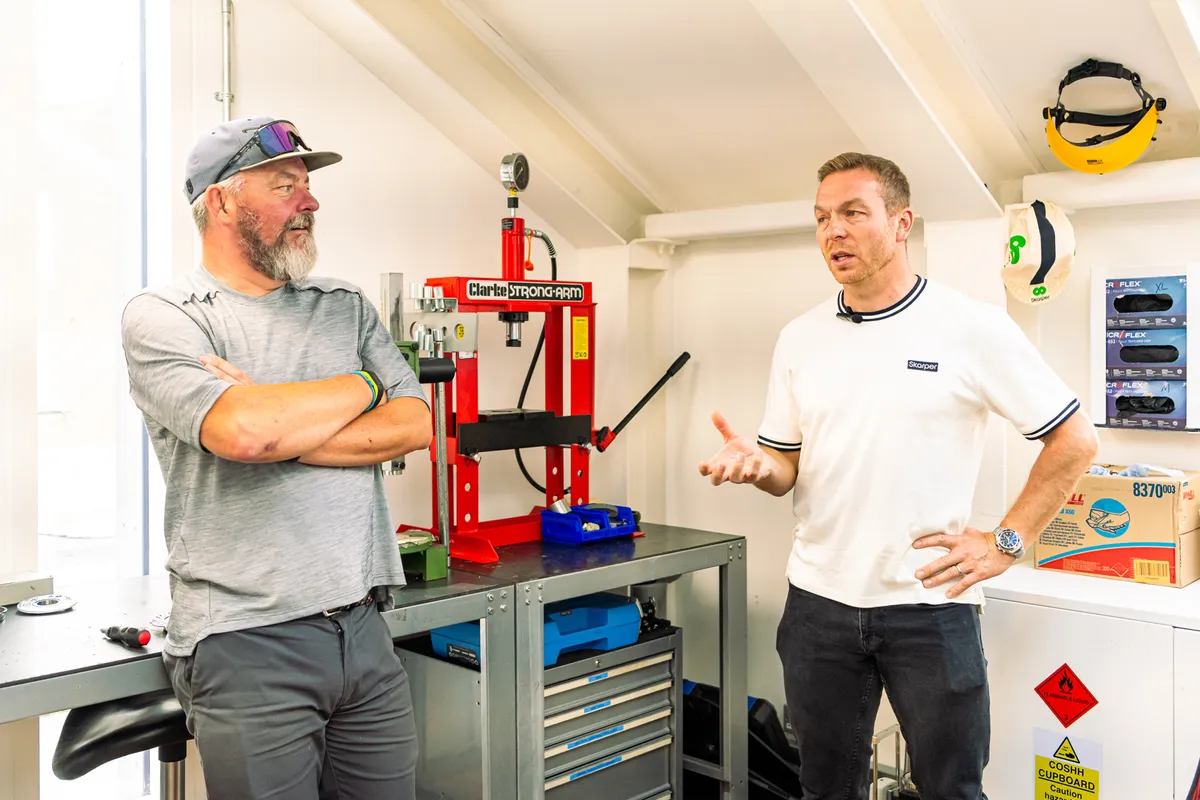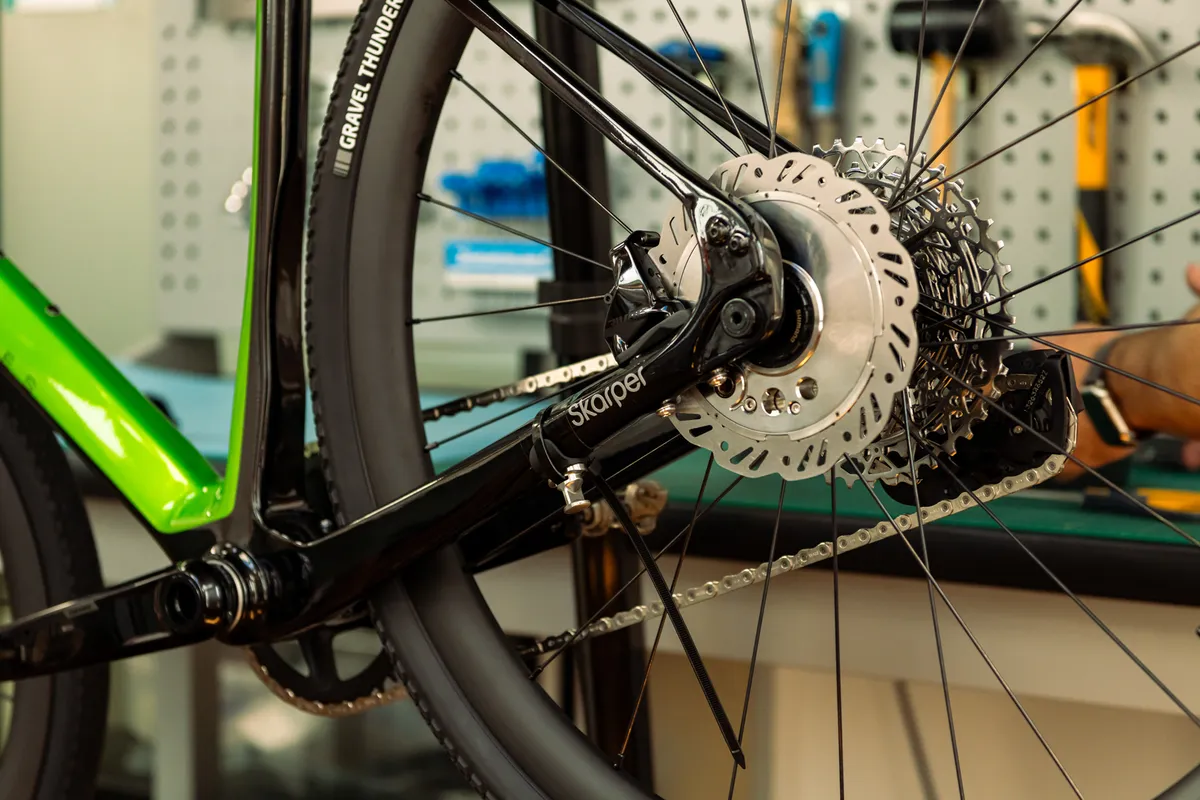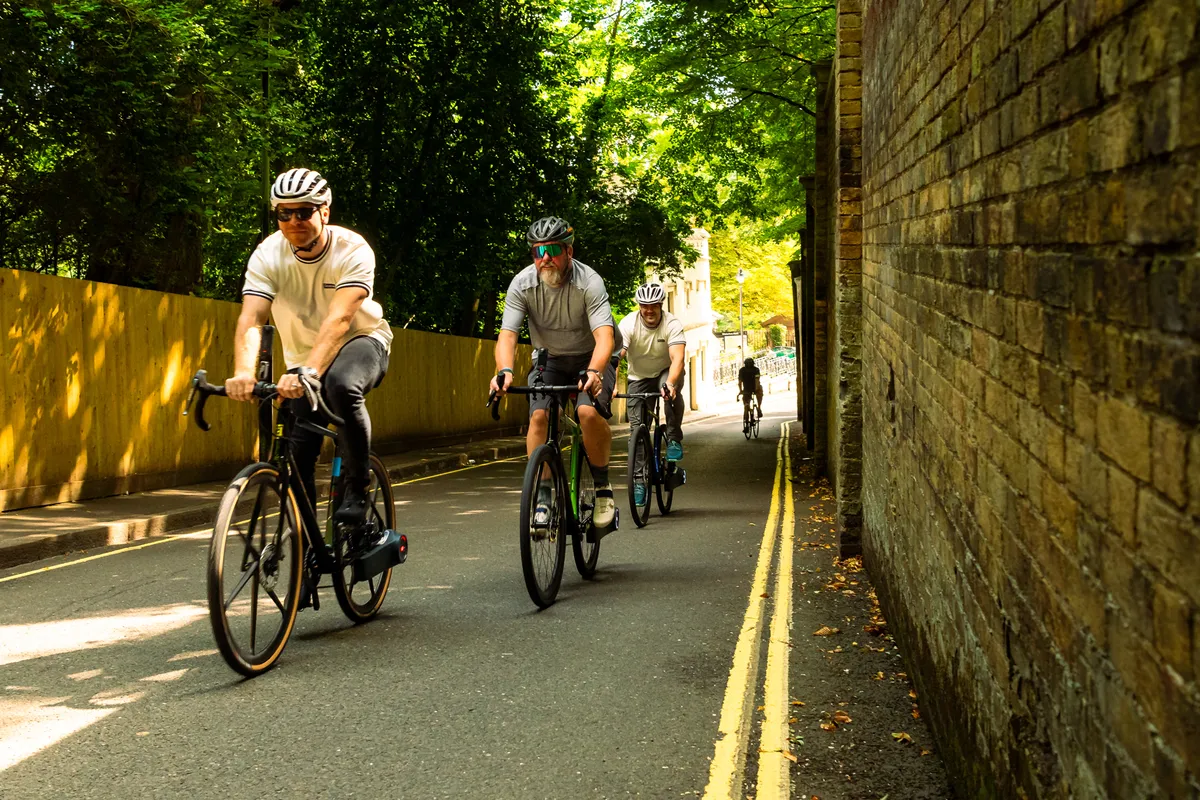Skarper announced its electric bike system in June 2022, showcasing a design that is attached via a disc brake rotor to electrify a regular bike – and now it's going into production.
Skarper’s system, which comprises of a proprietary disc brake rotor and chainstay-mounted motor unit, intends to simplify the process of fitting an electric bike conversion kit.
Skarper, backed by investors including six-time Olympic champion Chris Hoy, is now accepting pre-orders, with deposits of £79.95 for one of its conversion kits. Production of the first kits is expected to start in early 2024 and the full price will be £1,295.
We went to meet Skarper at its London HQ to find out more about the final design process – and to test-ride one of the units.
Final touches

The Skarper prototype we saw in June 2022 was a mix of folded aluminium sheeting, gaffer tape and rivets.
The unit was the third iteration of a working prototype developed by the Camden-based company.
Now, the latest Skarper unit features the finalised proprietary electronics, motor and gearbox arrangement, as well as the unique disc rotor.

The only change from this pre-production model and the final version of the Skarper unit will be switching from a CNC-machined alloy billet to a more complex and lighter casting for the internal skeleton of the system.
In terms of spec, the final unit appears to match most lightweight ebike systems, such as Mahle’s X20 electric motor which is found on bikes such as the Orbea Gain M10i.
The specification of the final Skarper unit is as follows:
- 250-watt motor
- 32Nm of torque
- The unit is expected to weigh 3.9kg, plus the 620g rotor
- 240Wh battery capacity
- 2.5hrs charge time empty to full
- Eco mode provides up to 50km of range for typical city riding conditions; 70km was achieved in out-of-city road cycling conditions; up to 30km in turbo mode.
- A 30-minute quick charge gives a range of 10-15km
Uri Meirovich, Skarper’s chief operating officer and co-founder (and a former Black Hawk helicopter pilot) says the company measured the torque of the system on a bike’s rear wheel and found it to be 32Nm.
The R&D story

The leading developer of the Skarper ebike conversion kit is Dr. Alastair Darwood.
Dr. Darwood has a background in inventing orthopaedic and anaesthetic medical devices for the UK's National Health Service, as well as a ventilator design developed in conjunction with Project Pitlane, a consortium of Formula One teams that came together with the aim of saving lives during the Covid-19 pandemic.
Since its inception, Skarper has expanded with a team of mechanical engineers, electrical and electronic engineers, industrial designers, and test engineers, with a network of engineering consultants in fields such as optics, gear manufacturing, and production line design.
According to Skarper, the team brings with it a wide range of expertise from fields including consumer electronics, cycling, aerospace, defence and surgical robotics.
Through the development of the unit, and the expansion of the team, Skarper’s private group of investors have funded to the tune of £8,000,000 ($10,139,000), with more than £4,000,000 ($5,068,500) of that said to be on research and development.

Testing, testing
Alongside the in-house team, Skarper has turned to Red Bull Advanced Technologies (RBAT), the engineering company born out of the Red Bull Racing Formula One team, to help overcome engineering hurdles and test the reliability and performance of the Skarper drive system.
The Skarper labs are home to a series of machines designed to long-term test both the drive unit and rotor.
The firm's testing has included rigging up a bike, with the Skarper unit fitted, with accelerometers, and riding it on various real-life road conditions.
Having understood the typical forces experienced by a bike, Skarper used that data to run a lab test using on a rolling road with a bump to simulate cobblestones.

The most "extreme" test protocol replicated riding on "severe" cobblestones at 30kph, according to Skarper. The test ran for 1,000km (over five consecutive days) with no issues, as far as the drive unit is concerned.
The same cannot be said for the donor bicycle, which sustained three broken wheels and ripped through multiple tyres. The rig is over 100kg and has been nicknamed ‘the destroyer’.
Skarper has also used a heavily-modified Tacx Neo direct drive smart trainer, utilising the indoor trainer’s built-in power meter.
Skarper used the rig to run its motor on turbo and at maximum torque with a simulated power input based on Sir Chris Hoy’s power numbers.
Here the emphasis was on measuring the fatigue of components, as well as noise and temperature management.
Finally, Skarper says it has run more than 2,000 attaching/detaching cycles of the attachment mechanism.
How does it ride?
Warren Rossiter, senior technical editor

I tested the latest Skarper ebike conversion kit for an hour through the streets of Camden, London, heading for the steep residential slope of the Holly Lodge estate and Swain’s Lane, which runs alongside Highgate Cemetry.
The unit I rode weighed 4.1kg and used a prototype 740g disc brake rotor, but the final production model is expected to weigh less.
The unit was attached to a Black Series Multistrada Gravel, a yet-to-be-released gravel bike from a new brand run by Sir Chris Hoy and Andy Wallis, Skarper’s bicycle specialist.

The bike and Skarper unit weighed in at a total of 11.8kg. This is an impressively light package when you consider the £11,800 Wilier Filante Hybrid (with lightweight road tyres and Shimano Dura-Ace Di2) hits the scales at 10.74kg.
Fitting the Skarper is simple. You remove your rear wheel’s disc brake rotor, and replace it with the Skarper rotor. Then you attach a ‘stud’ to the chainstay which will hold the unit in place.
The unit slots in and locks on the chainstay stud, and you close a half-moon-shaped handle to lock it in place.

Finally, you loop a silicone-encased pedal sensor onto your bike’s crank arm and you're good to ride.
The unit stayed firmly in place on the bike, despite my best efforts to dislodge it, launching the bike off curbs and traffic-calming street furniture.
The level of assistance from the motor was impressive.
The Skarper unit doesn’t feel disconnected from the bike with the power and torque being an impressive match, based on my early impressions, for the likes of Mahle’s X20 and X35 motors, along with FSA’s HM1 and Fazua’s lightweight mid-mounted system.

I was able to ascend Swain’s Lane, which averages roughly eight per cent and maxes out at 20 per cent, while being able to hold a conversation.
The fact that I found myself comparing the Skarper to electric bike motors on dedicated bikes, rather than ebike conversion kits, speaks volumes.
I can’t vouch for the range yet, or the long-term useability, but that’ll come as soon as I can get my hands on the finished production model.

The concept of being able to turn any bike into an electric bike – and back again – is unique in the world of motor-assisted bikes.
If the Skarper can live up to its impressive claims – and indeed my first impressions – it could both render lightweight e-road and e-gravel bikes a luxury at best and irrelevant at worst.
Better yet it could convert that commuter or winter bike languishing in your shed as the ideal assisted commuting bike. In theory, you could also buy multiple rotors and give your whole household the ability to make their bike electric in minutes.
With urban mobility a hot topic, and electric bikes central to reducing our reliance on motor vehicles, brands like Skarper could play a key role in an electrified future.
